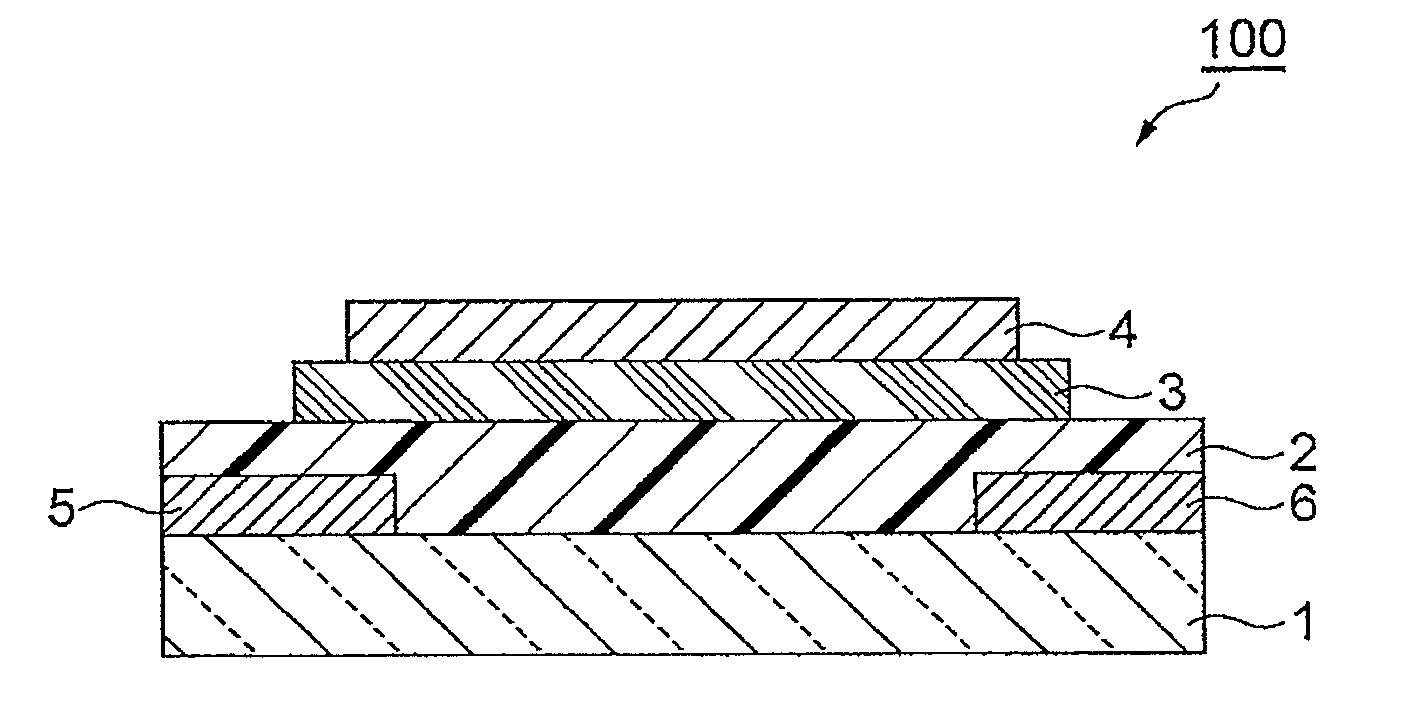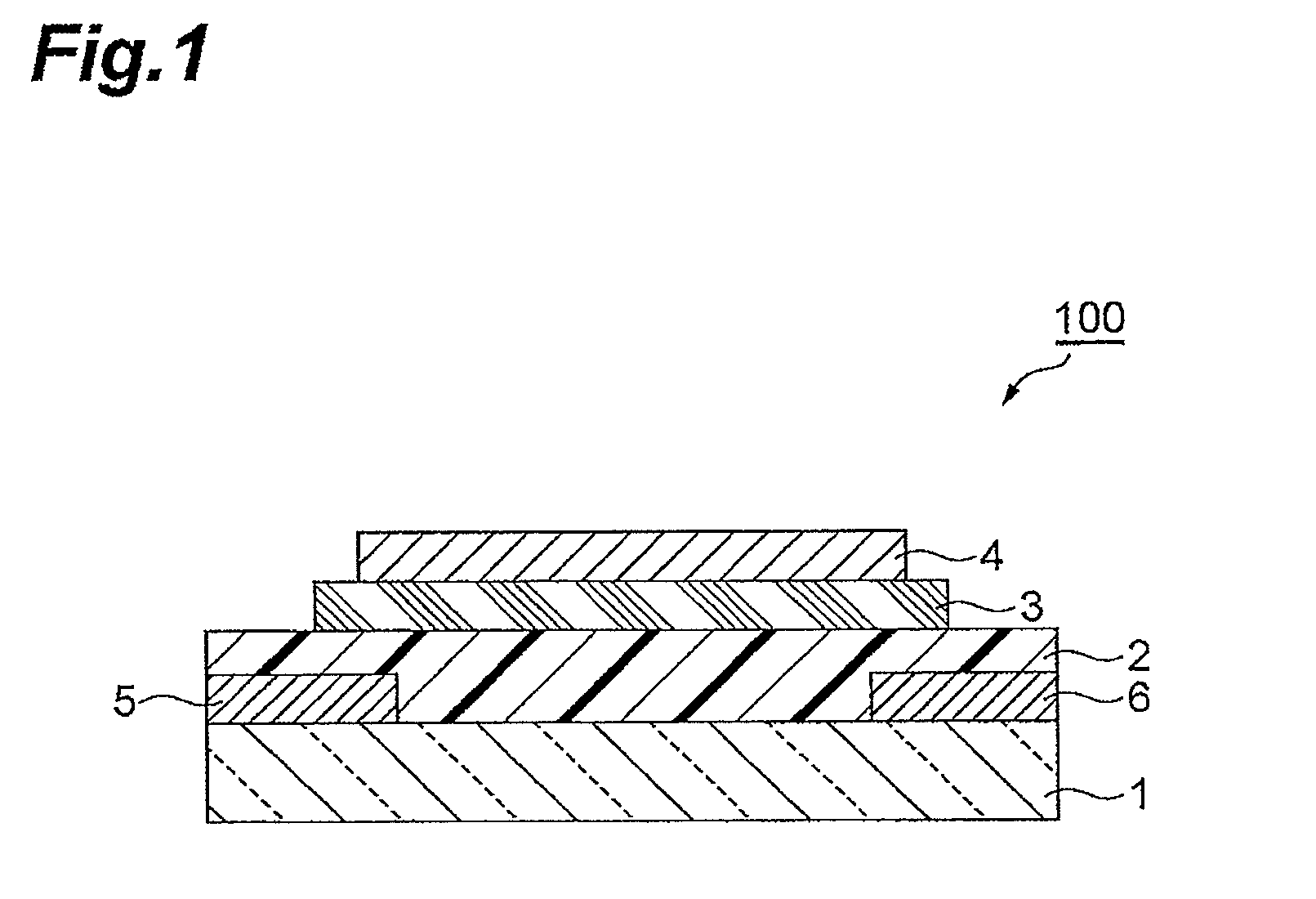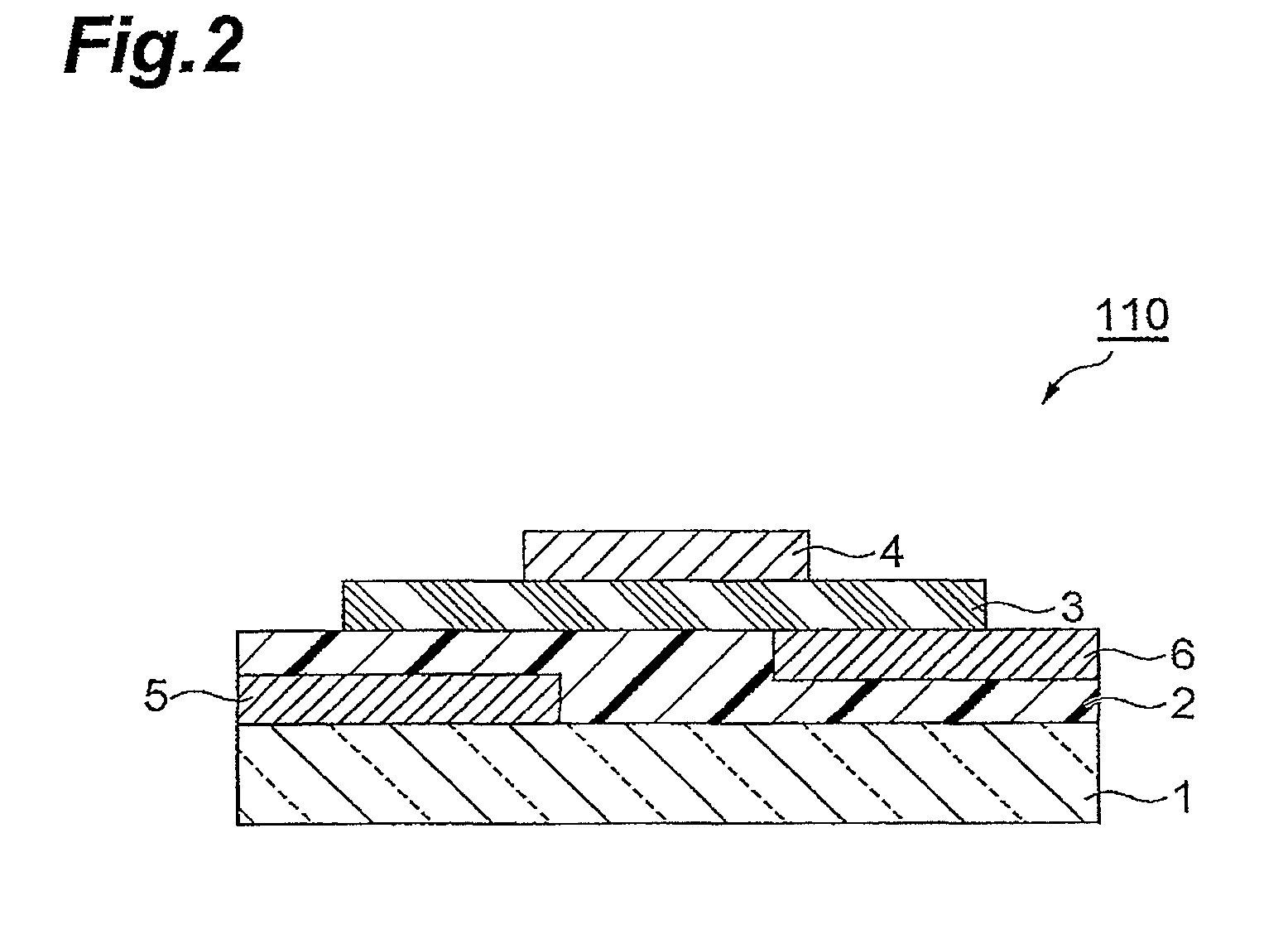Polymer having unit obtained by condensation of difluorocyclopentanedione ring and aromatic ring, organic thin film using the same, and organic thin film device
a difluorocyclopentanedione ring and aromatic ring technology, applied in the field of polymer, can solve problems such as insufficient performance, achieve excellent electron transportation properties, improve solubility, and reduce lumo level
- Summary
- Abstract
- Description
- Claims
- Application Information
AI Technical Summary
Benefits of technology
Problems solved by technology
Method used
Image
Examples
reference synthesis example 1
[0146]A starting raw material 1,3-dibromo-4H-cyclopenta[c]thiophene-4,6(5H)-dione was synthesized according to the report by Khanh, L. P., Dallemagne, P., and Rault, S. Synlett., 1999, 9, 1450-1452. Then, an ethyl acetate solution (5 mL) of 1,3-dibromo-4H-cyclopenta[c]thiophene-4,6(5H)-dione (1.00 g, 3.25 mmol) and N-fluoro-6-(trifluoromethyl)pyridinium-2-sulfonate (MEC-04B) (1.75 g, 7.14 mmol) was prepared and agitated at 85° C. for 4 hours. After the reaction solution was cooled to a room temperature, it was poured into water and then extracted by ethyl acetate. The organic layer formed after the extraction was washed by saturated sodium chloride water and dried by anhydrous sodium sulfate. After insoluble matters were removed by filtration, the solvent was distilled out under a reduced pressure. The residue obtained was purified by a column chromatography using a silica gel (hexane / chloroform=1 / 1) to obtain “1,3-dibromo-5,5-difluoro-4H-cyclopenta[c]thiophene-4,6(5H)-dione” shown ...
example 1
[0148]The foregoing Compound A (589 mg, 1.70 mmol), 2-tributyl stannyl thiophene (1.32. g, 5.10 mmol), and tetrakis(triphenylphosphine)palladium(0) (196 mg, 0.17 mmol) were taken into a test tube having a cap which had been dried by heating. Then, toluene (10 mL) was added to it, and the reaction was carried out at 120° C. After 12 hours, the resulting mixture was allowed to be cooled and extracted by ethyl acetate. The organic layer was dried by anhydrous sodium sulfate and filtered. After concentration under a reduced pressure, the residue obtained was purified by a column chromatography (silica gel charged by chloroform) by using a developing solvent (hexane / ethyl acetate=4 / 1) to obtain an intended Polymer A (186 mg, 31%) as shown by the following formula (41) as a red solid. Reduction potential of Polymer A was −1.39 V.
[0149]TLC Rf=0.44 (4:1 hexane / EtOAc): 1H-NMR (270 MHz, CDCl3) δ 8.17-8.19 (m, 2H), 7.55-7.57 (m, 2H), 7.18-7.22 (m, 2H): MS (EI) m / z 352 (M+).
[0150]
example 2
[0151]Compound A (160 mg, 0.463 mmol), phenyl boric acid (56 mg, 0.463 mmol), potassium carbonate (128 mg, 0.925 mmol), and tetrakis(triphenylphosphine)palladium(0) (53 mg, 0.046 mmol) were taken into a test tube having a cap which had been dried by heating. Then, the resulting mixture was dissolved into THF / water=5 / 1 (5 mL) and reacted at 90° C. After 12 hours, the mixture was allowed to be cooled and extracted by ethyl acetate. The organic layer was dried by anhydrous sodium sulfate and filtered. After concentration under a reduced pressure, the residue obtained was purified by a column chromatography (silica gel charged by chloroform) by using a developing solvent (hexane / ethyl acetate=4 / 1) to obtain an intended Polymer B (73 mg, 46%) as shown by the following formula (42) as a yellow solid. Reduction potential of Polymer B was −1.41 V.
[0152]TLC Rf=0.50 (4:1 hexane / EtOAc): 1H-NMR (270 MHz, CDCl3) δ 8.05-8.07 (m, 4H), 7.53-7.55 (m, 6H): MS (EI) m / z 340 (M+).
[0153]
PUM
| Property | Measurement | Unit |
|---|---|---|
| reduction potential | aaaaa | aaaaa |
| thickness | aaaaa | aaaaa |
| dihedral angle | aaaaa | aaaaa |
Abstract
Description
Claims
Application Information
 Login to View More
Login to View More - R&D
- Intellectual Property
- Life Sciences
- Materials
- Tech Scout
- Unparalleled Data Quality
- Higher Quality Content
- 60% Fewer Hallucinations
Browse by: Latest US Patents, China's latest patents, Technical Efficacy Thesaurus, Application Domain, Technology Topic, Popular Technical Reports.
© 2025 PatSnap. All rights reserved.Legal|Privacy policy|Modern Slavery Act Transparency Statement|Sitemap|About US| Contact US: help@patsnap.com



